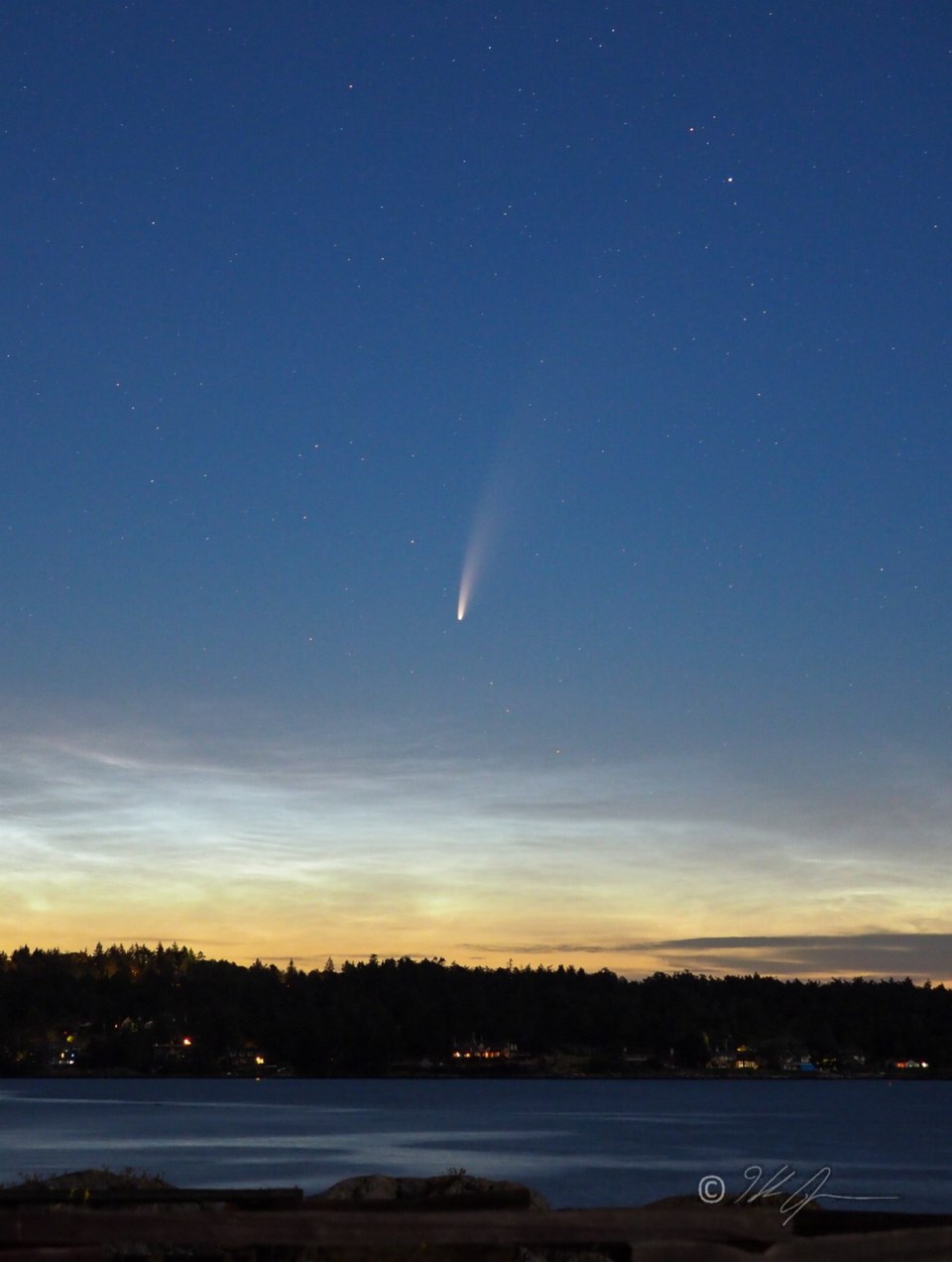A recently discovered comet will grace the night sky over B.C. for the next couple of weeks, before disappearing again for thousands of years.
The Neowise comet, discovered in March by NASA’s Neowise infrared space telescope, reached its closest point to the sun on July 3, which caused the “frozen ice ball” to heat up and burn gas and dust off its surface. That has created a large debris tail as it moves through the solar system, said James Di Francesco, the director of Dominion Astrophysical Observatory in Saanich.
“It’s a rare delight to see,” he said. “I don’t think we’ve had a comet as nice as this for the last 20 years or so.”
Di Francesco said the comet will be visible for a few weeks. It can be seen with the naked eye, but binoculars will make for better visuals, he said.
The comet is getting brighter as it nears Earth, and it will reach its closest point on July 23, when it will be about 103 million kilometres away.
It will begin to fade as it moves farther away, Di Francesco said.
“Right now, people are seeing it pretty clearly just looking out their front doors,” he said.
In the coming week, the comet will be visible in the northeast — to the left of the bright light of Venus — just before dawn. Around July 14, it will become visible close to the horizon looking northwest around dusk.
Di Francesco said the best way to see the comet is to find a dark place with an unobstructed view of the horizon.
Once the comet heads back to the outer solar system, it will take about 7,000 years to complete its path and return to Earth’s proximity, “so enjoy it while you can,” Di Francesco said.
Scientists involved in the NASA mission that discovered the comet said it’s about five kilometres across. Its nucleus is covered with sooty material dating back to the origin of our solar system 4.6 billion years ago.
Astronauts aboard the International Space Station have already caught a glimpse of the comet, said by NASA to be the brightest since the mid-1990s for stargazers in the Northern Hemisphere.
Astronaut Bob Behnken shared a photo of the comet on social media late Thursday, showing central Asia in the background and the space station in the foreground.
“Stars, cities, spaceships, and a comet!” he tweeted from orbit.
Night sky, just before dawn from @Space_Station.
— Bob Behnken (@AstroBehnken) July 9, 2020
Stars, cities, spaceships, and a comet! pic.twitter.com/fCKjrfayC1
— With files from The Associated Press



